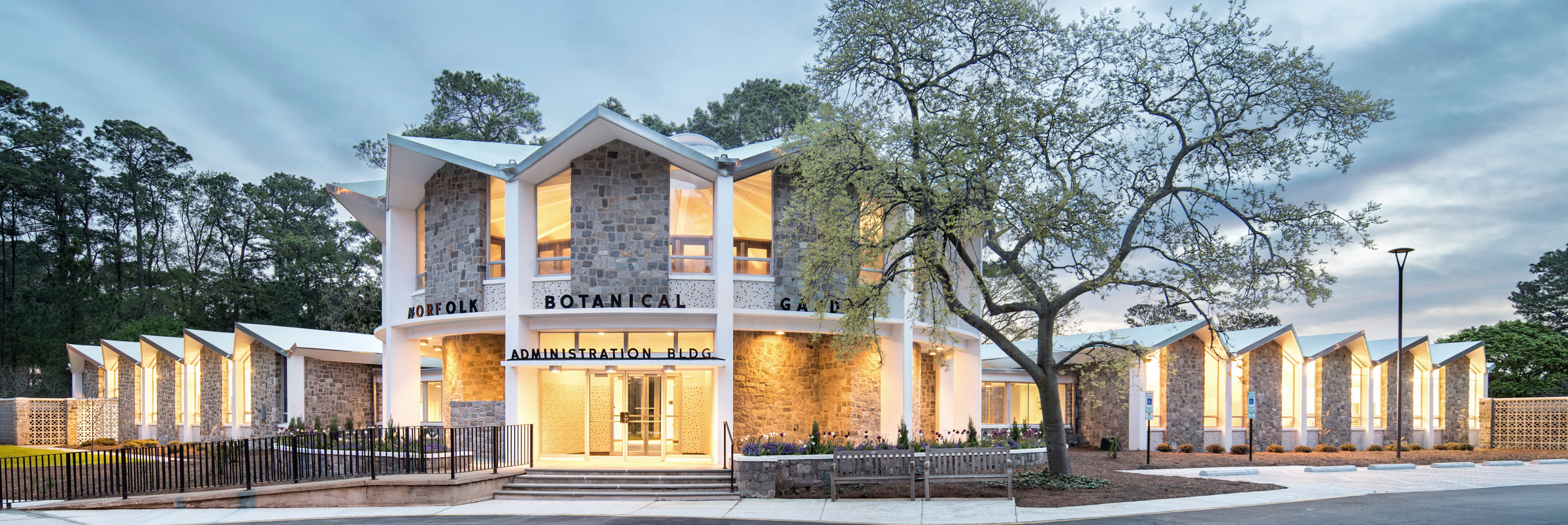
The Norfolk Botanical Garden was established in 1939 as the Norfolk Azalea Garden. It was a WPA funded project employing over 200 African American women to clear 75 acres of land and plant more than 4,000 azaleas and other shrubs. As the garden and its mission expanded, a complex of buildings was added in the early 1960s including the Administration Building, a café and restroom facilities.
Sited on the entrance parkway to the Garden, these structures created a modern enclave for visitors with the use of similar architectural forms and materials. The original architect, Vernon Moore maintained a simple palette of stone and glass and crowned all three buildings with folded roof forms giving them an organic appearance. The Administration Building has a three-part plan. The rotunda, flanked by two wings, was a space for social functions, receptions and galas. The mezzanine level contained the Garden’s library. The wings housed an auditorium and the Garden’s executive offices. Over the years, the rotunda became an abandoned pass-through connecting the wings and the auditorium was subdivided into private offices. It was occupied until the heating systems failed 2017 and needed significant structural repair. The Botanical Garden was confronted with the decision of rehabilitation verses demolition and chose to retain the building and return it to its original purpose.
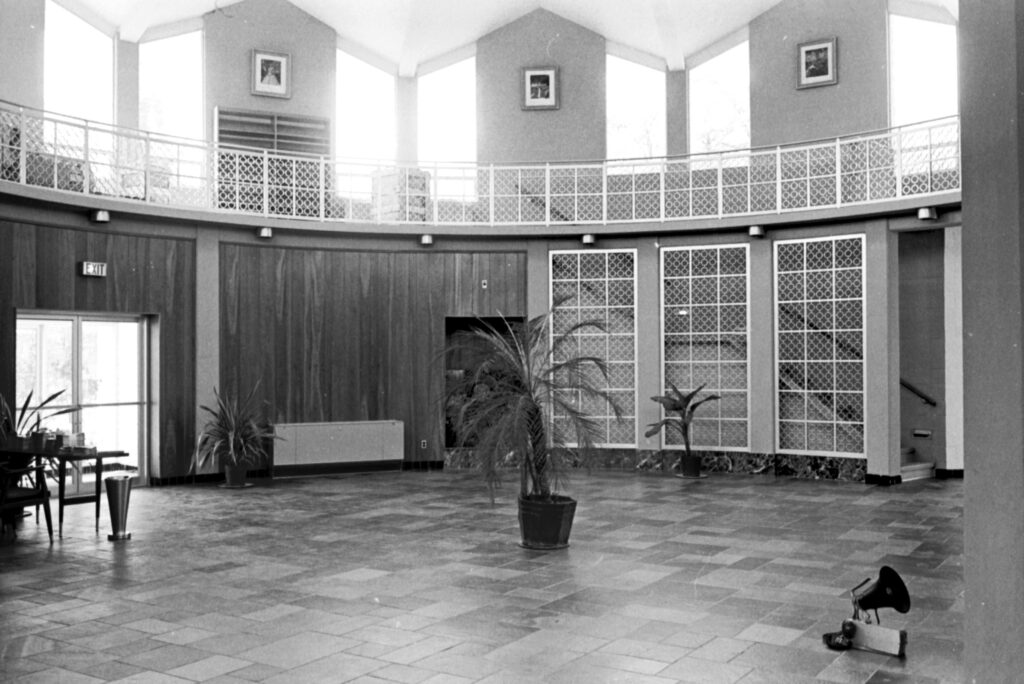
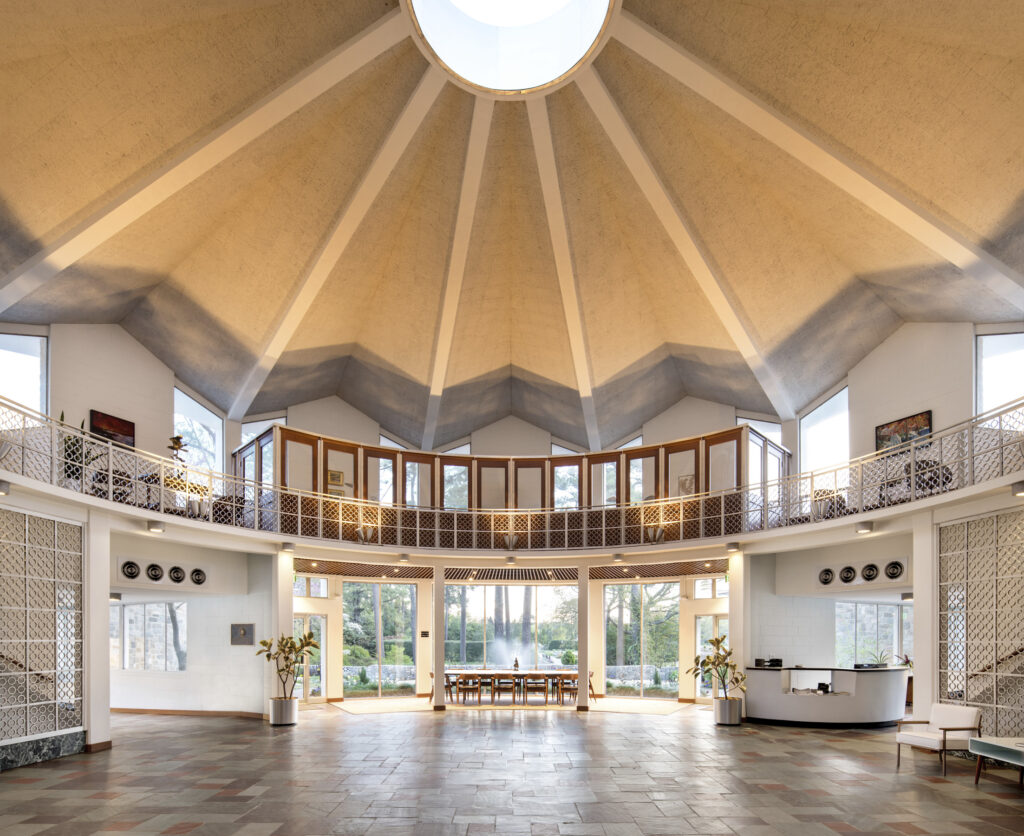
The goal of the project was to be as faithful to the original design-intent as possible. With partitions removed to regain the volume of the auditorium and to open-up the administrative wing, these spaces were returned to their initial configuration and made more conducive to a collaborative office environment. The design removed the intrusive renovations, re-exposed the folded-plate ceilings in the wings, restored the plaster finishes, and retained and refinished decorative features such as light fixtures and aluminum screens.
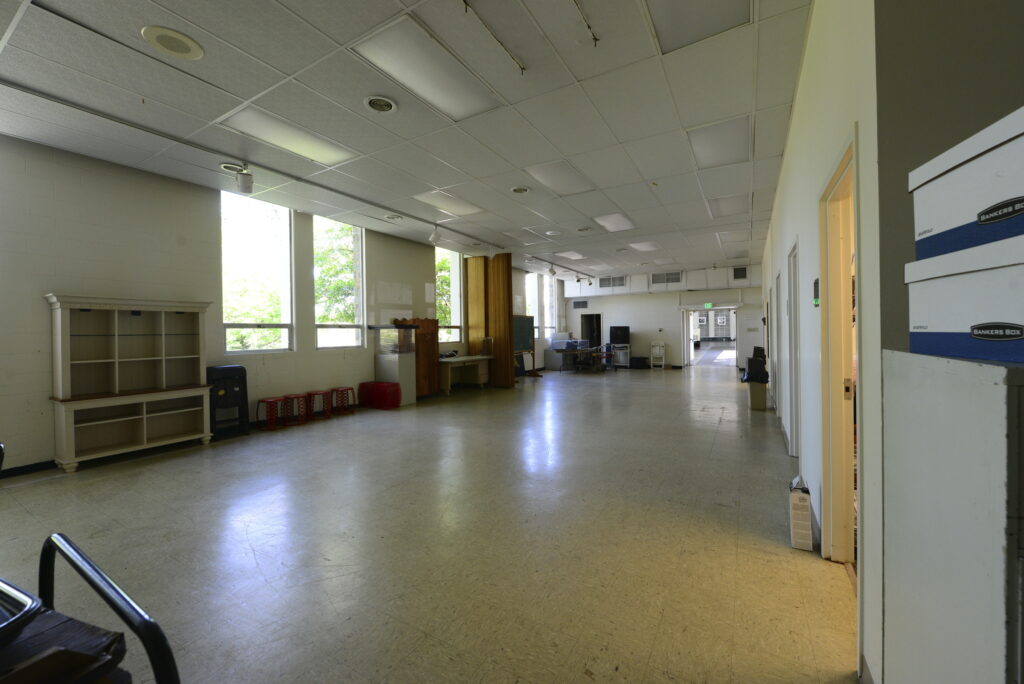
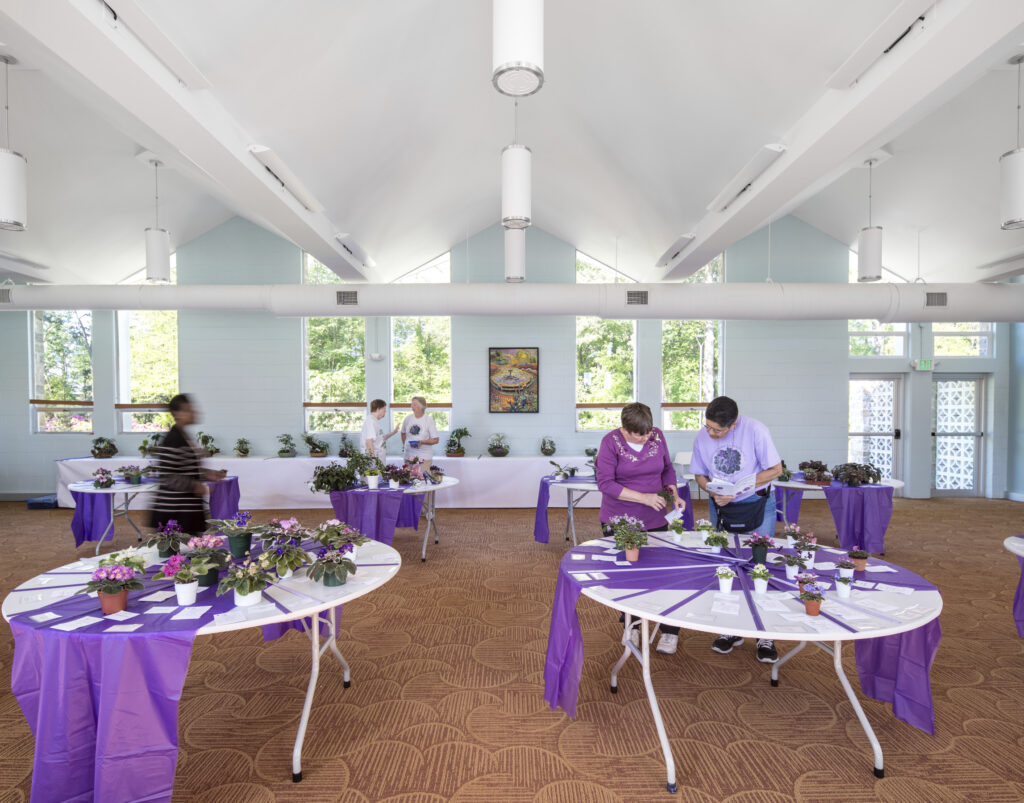
The exterior rehabilitation repaired the historic materials including limited repointing of the cobblestone veneer, concrete spall repair and patching the decorative tile. All of the original aluminum doors and windows were retained and refurbished.
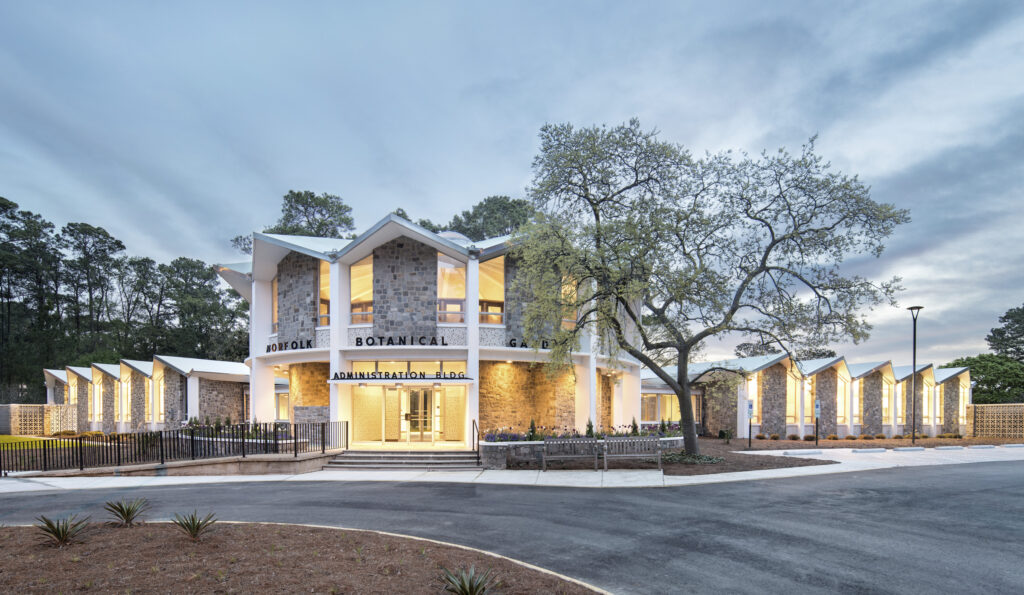
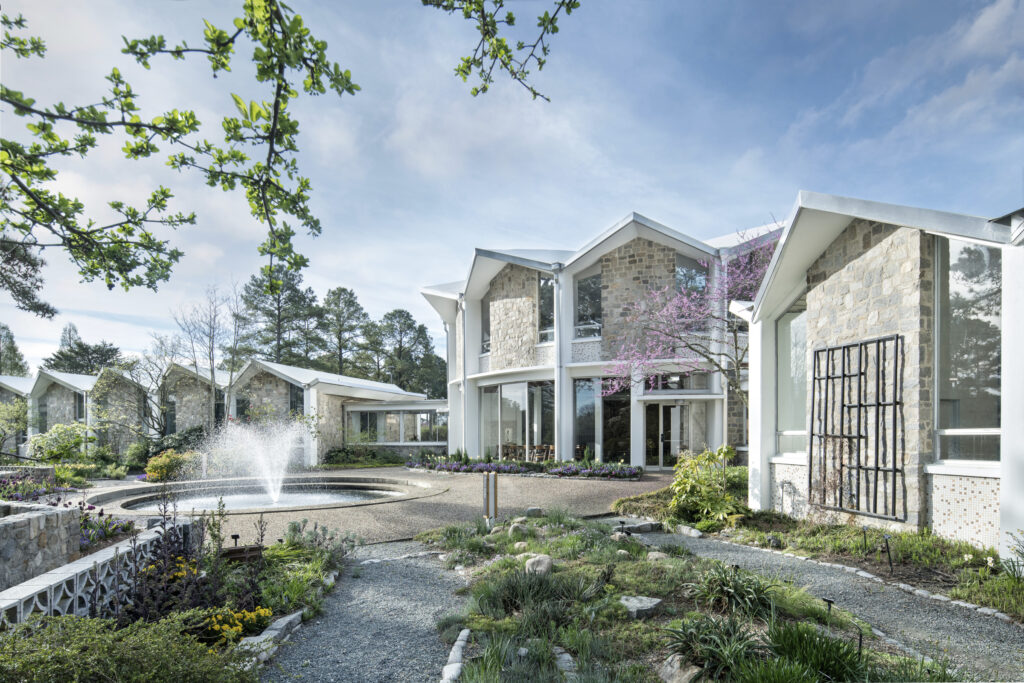
Hanbury’s sensitive rehabilitation respects the simplicity of the original design, and the result is an exercise in restraint and respect for the character of this structure, which is truly representative of its time. The rehabilitation is also a testament to the Norfolk Botanical Garden’s respect for its history and cultural contribution to Hampton Roads.
